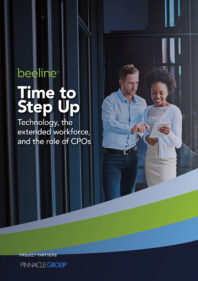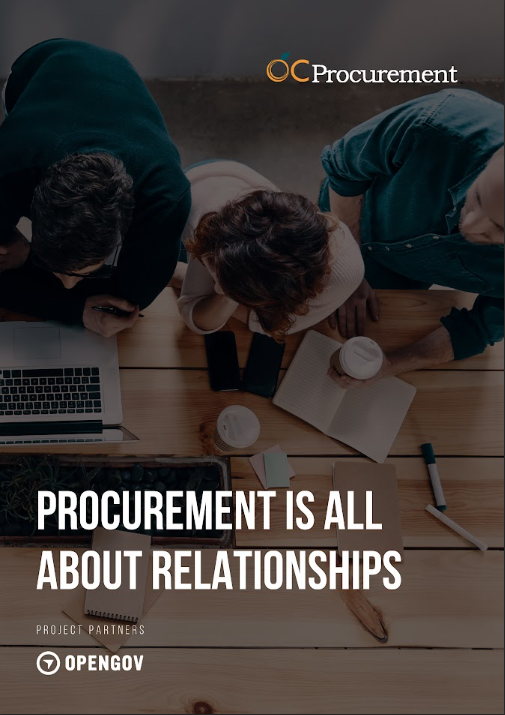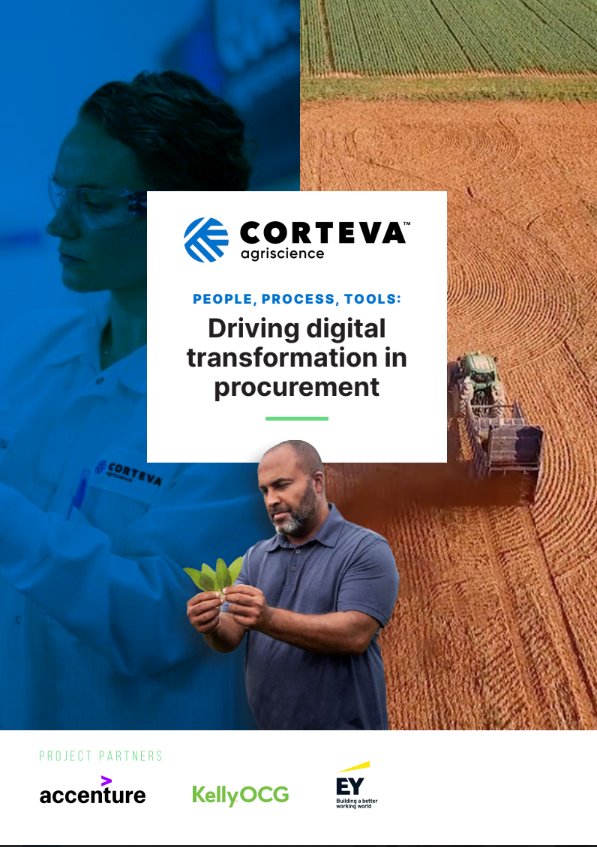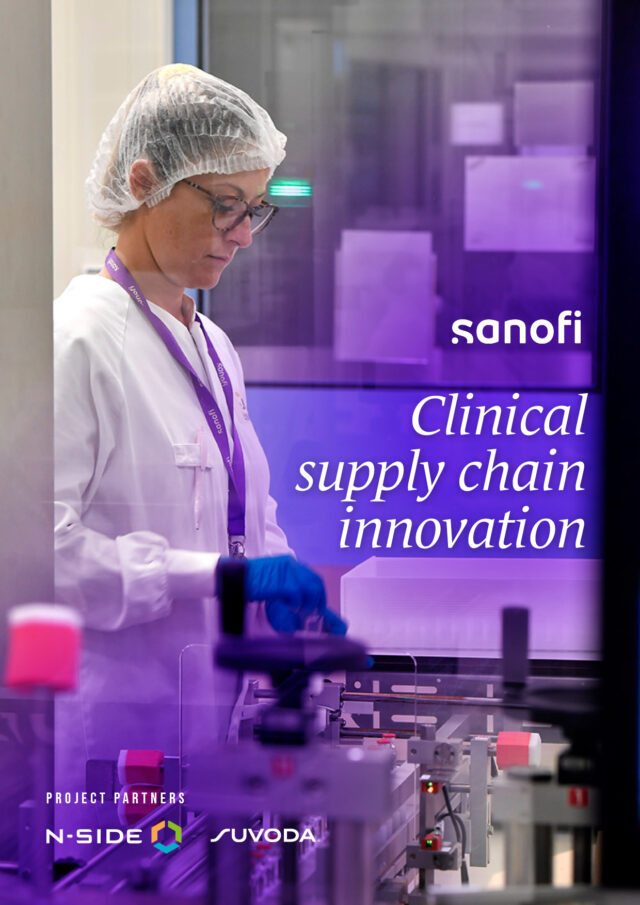Mike Schiappa, Chief Procurement Officer at Beeline, discusses key procurement trends pertaining to extended workforce management, stating that now is the time for CPOs to drive digital transformation.

The gig economy is, in the United States at least, now mainstream. Even in 2017, three years before the COVID-19 pandemic, the country’s Bureau of Labor Statistics found that more than a third of the American workforce (55 million people) were gig workers.
Although the pandemic hit contingent workers, consultants, and other gig talent hard in the initial phase, it has led to a mass migration of organizations towards teleworking models and created an environment that is even more conducive to this form of work.
Managing the extended workforce
Indeed, we are now operating in a new normal which is increasingly underpinned by location flexibility and empowerment over work-life balance – fundamental pillars of the gig economy. And a fresh survey by Gallup suggests this trend is here to stay, with around half of U.S. workers stating they would prefer to work remotely in the post-pandemic era.
This has clear and obvious implications for organizations, not least in the way they manage their extended workforces. And the way in which talent is viewed has also changed. Rather than seeing external workers as a source of cost savings, they are seen as high-value, highly skilled workers amid the aforementioned labor shortages.
Mike Schiappa is Chief Procurement Officer at extended workforce solutions provider Beeline, and knows all too well the challenges organizations face when it comes to plugging gaps in workforces.
An early adopter of vendor management system (VMS) technology, he brings more than 20 years of sourcing experience with Fortune 500 firms to the role, a position he has held since April.

“Like many people in procurement, I actually fell into it somewhat,” Schiappa muses. “When I was at Staples, I was responsible for cash management… The CPO’s office was right outside of my ‘cube’ when I was in the cube farm.
“One day he came up to me and said ‘I hear you negotiating with the banks all day, every day. When I get a position open, I want to hire you into my organization… so that happened, and I have loved it ever since.”
Schiappa spent 15 years at insurance giant MetLife before joining Beeline, an experience which saw him manage multi-billion-dollar budgets across a spectrum of procurement functions, from accounts payable to third-party risk management to contingent labor management.
Indeed, such is his passion for the profession, he is four recordings into a Beeline-sponsored podcast named CPO Open Mic, a series where he sits down with fellow procurement leaders to discuss key topics and trends.
One of those trends is digital transformation. Here, Schiappa (and no doubt past and future podcast guests) has seen first-hand the power of technology in managing gig workforces during his tenure at Beeline.

Technology and talent
The company itself is a pioneer of its cloud-based Beeline Extended Workforce Platform that reaches beyond a traditional VMS with futureproofed talent sourcing and management technologies – a solution which helps firms to bridge nuanced and interlinked procurement and IT challenges relating to the external workforce.
“Put simply, if you don’t have the technology in place, you are not going to be able to source the right talent at the right speed,” Schiappa says. “We are seeing this play out amid the skills shortages across many sectors… and manual processes will only get you to a certain point.”
Competition is high and, in Schiappa’s eyes, companies need to stand out through their brand identity and perhaps even consider temporary-to-permanent employment strategies – this, of course, underpinned by a technology platform that enables total workforce visibility and recruitment to take place at pace.
“The other piece to digital transformation centres around the financials and the economics of having technology in place – making the organisation more nimble, more agile, more user friendly, and enabling your internal customers to be successful,” Schiappa continues.
“This is all generated by best-of-breed technology that is well integrated across the procurement ecosystems for each one of those business units.” Indeed, the CPO goes a step further by calling for procurement leaders to drive change and innovation within IT as opposed to being fed solutions by their tech departments. He adds: “My personal feeling is that digital transformation should come from the procurement space. I think far too often we see that IT tries to drive the agenda.” These thoughts tie into another key procurement priority area for Schiappa – the issue of cost and how attitudes towards finances have changed over the past decade or so.
Cost and compliance
An undoubted trend and view emerging from organisations operating across multiple sectors is that procurement holds a far more strategic value than simply serving as a cost saving function. Rather, what we are seeing are more and more procurement leaders helping to guide wider corporate strategies framed around optimizing expenditures and capital investments.
And technology can, and is, aiding this role as a driver of these cost optimization strategies. Beeline’s platform, for example, provides a single tool to enable procurement departments to effectively manage and measure external workforce spend. Visibility is key, and not just in relation to strategic spending. Once companies can see their external labor spend, only then can they begin to optimize it.
“Technology is a critical component to managing a successful program but the entire operating model needs to be
really well thought out. I think managed service providers (MSPs) play a big role in this because they have the expertise and the scale to help drive the value across the organization – like Pinnacle. They were an integral part of my operating model
as we scaled globally. Executing at the highest levels with an internal team alone can be very challenging and reduce your time to value.”

Schiappa also outlines a critical compliance and risk function, a topic which arises in three out of four client conversations he has at Beeline. Once again this is an example of procurement assuming a strategic business function. The approach to risk has evolved from simply being a box-ticking compliance exercise to a strategy to protect the value of organizations – indeed, a key part of Schiappa’s role is ensuring customers have the technology to support this end.
“In my view, third-party risk management should be under the CPO’s remit,” he says. “They have the organization-wide knowhow, they have the active contracts, they do the negotiations… and it requires collaboration across multiple areas within an organization to make a third-party risk management programme successful.
“When I was at MetLife, we had to restructure the entire programme because we had over 20,000 suppliers and the third-party risk management programme was very variable and done manually. And this is where technology, again, has to come into play to manage those suppliers across the board.
“From a Beeline perspective, risk is extremely important because technology is no longer a discretionary spend – it’s just as important as a procure-to-pay system.”
Furthermore, in the new world of teleworking and the growing gig economy, risks associated with workforce management have evolved. Take the response to the COVID-19 pandemic. Here, with companies forced to go remote in a very short time, all workers had to be granted access to servers from afar via home internet and even personal devices. This has obvious security implications, making visibility over which workers have what access to various systems absolutely critical to managing risk.
“Simple but serious scenarios can be avoided with next-generation VMS technology,” Schiappa adds. “For instance, when someone gets offboarded, they may still have connectivity to the systems even after starting work with another company because they were not properly offboarded.”

The pandemic, Schiappa says, has exacerbated these issues due to the huge upsurge in remote working, which leads into his final thoughts on the position of procurement in relation to IT moving forwards.
While huge digital strides have been made in the past two or so years, such rapid acceleration inevitably leaves gaps and is not sustainable to maintain in the longer term.
Schiappa concludes: “Now is the time to recalibrate. What does our tech stack look like? How are we utilizing best-in-breed solutions? It can seem daunting, but it’s really about taking a step back to recalibrate on all of what’s happened since 2020.
“Yes, when you look at the short-term fixes, they were good at the beginning, and McKinsey released a study which showed several years of acceleration in a few months. But now is the time for procurement leaders to step up and assume greater leadership and responsibility in the IT space.”









